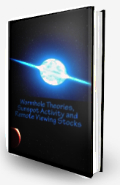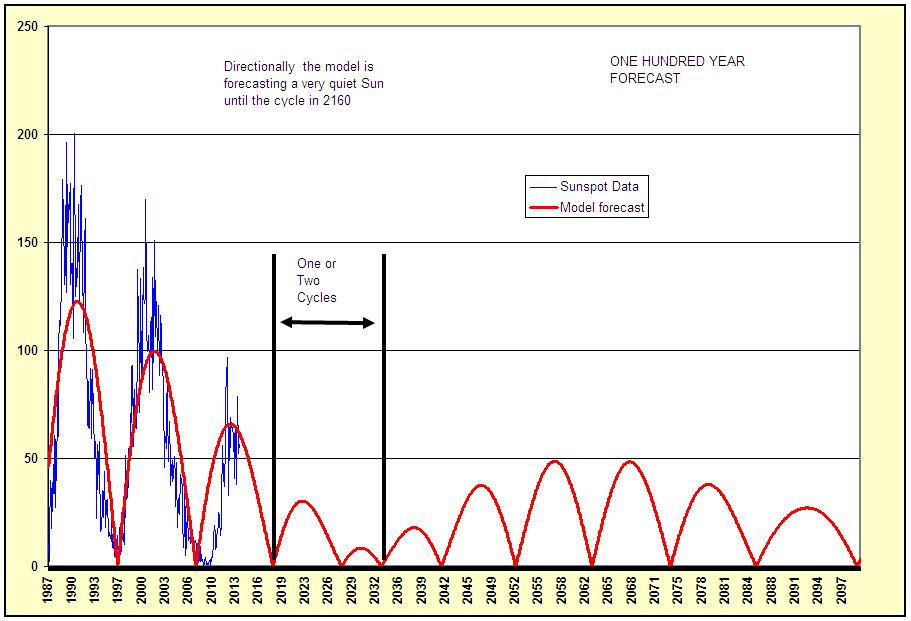News
 New Books
New BooksVisit the Books Page on the homepage to See our Latest Releases
What is Earth's Future Weather Going to Be Like?
THe Future of Earth's Terrestial Weather
Excerpt from the book: Wormhole Theories, Sunspot Activity and Remote Viewing Stocks

Read the first 3 Chapters Free
Purchase Hardcover Paperback from Amazon.com
Purchase Kindle Version from Amazon.com
Purchase Hardcover Paperback from CreateSpace
When solar activity is lower, ionizing radiation in earth's stratosphere will increase due to more cosmic rays. This is because higher solar activity tends to push cosmic rays away from the Earth. The lower the solar activity, hence the more cosmic rays enter earth's atmosphere, creating more ionization (Rotation of the Earth, solar activity and cosmic ray intensity. T. Barlyaeva et al). Because cosmic rays are responsible for more clouds, and clouds form more often during low air pressure, this would make sense.
During periods of higher cosmic ray activity (due to a reduction in solar activity) when the right atmospheric conditions are present, rain will form (The influence of galactic cosmic ray on rainfall and temperature. S. Chaudhuri. et al. 2014). Increased cosmic rays also result in the formation of clouds. (The influence of cosmic rays on terrestrial clouds and global warming. E. Pallé Bagó and C. J. Butler), (Climate Change and the Earth's Magnetic Poles. Kerton and Adrian). Considering solar activity is going into a major decline for the next 20 to 40 years, we can expect to see a lot more rainfall occurring in certain regions on the planet earth. This is because our Sun's magnetic field shields earth from excess cosmic rays. During low solar activity, more of the cosmic rays will reach Earth.
History Repeats Itself. Using Carbon-14 to Measure past Cosmic Ray Activity.
The radioactive isotope Carbon-14 is used to measure past cosmic ray activity. Carbon-14 is produced in earth's upper atmosphere when cosmic rays hit nitrogen-14 and convert it into carbon-14. Because increased solar activity reduces cosmic rays, it leaves a footprint of decreased carbon-14 formation which can be measured in the rings of trees. Solar Astronomer John Eddy discovered that carbon-14 in tree rings showed a period of extreme low solar activity dating from approximately 1450 to 1540. This was then named the Sporer Minimum. In a published paper in the journal Science in 1977, Dr. Eddy showed the Maunder Minimum and Sporer Minimum occured during the coldest intervals of the Little Ice Age.
The Little Ice Age
The Little Ice Age was accompanied by an expansion of mountain glaciers in Norway, the Alps, Ireland and Alaska. Three cycles of extreme chilly periods occurred around 1650, 1770 and 1850. These were each separated by slight warming periods according to NASA. During the last Maunder Minimum, between 1645 and 1715 AD (the Maunder Minimum), the sun was almost completely spotless and Europe and much of Earth witnessed extremely harsh winter.
Cosmic Rays in Decline. The Forbush Decrease
Decreasing cosmic rays are known as the "Forbush Decrease". The Forbush decrease is named after physicist Scott E. Forbush, who studied cosmic rays and solar activity in the 1930’s and 1940’s. The Forbush Decrease occurs when galactic cosmic ray intensity following coronal mass ejections (CME's) goes into decline. This sudden decline is the result of the magnetic field of the solar wind sweeping the galactic cosmic rays away from Earth.
Forecasted Sunspot Activity

Further reading
G. Delaygue and E. Bard. An Antarctic view of Beryllium-10 and solar activity for the past millennium, Climate Dynamics. 2011
So in summary, global warming is going to contribute to much heavier than expected rainfall in certain regions on earth.
Excerpted from the book: Wormhole Theories, Sunspot Activity and Remote Viewing Stocks
Thank You for visiting our site and reading our articles and new update. If this information has helped you or someone you know, please consider contributing to this site. Your contribution will ensure the continued publishing of unique and quality articles at no cost to all of our visitors and regular readers.
